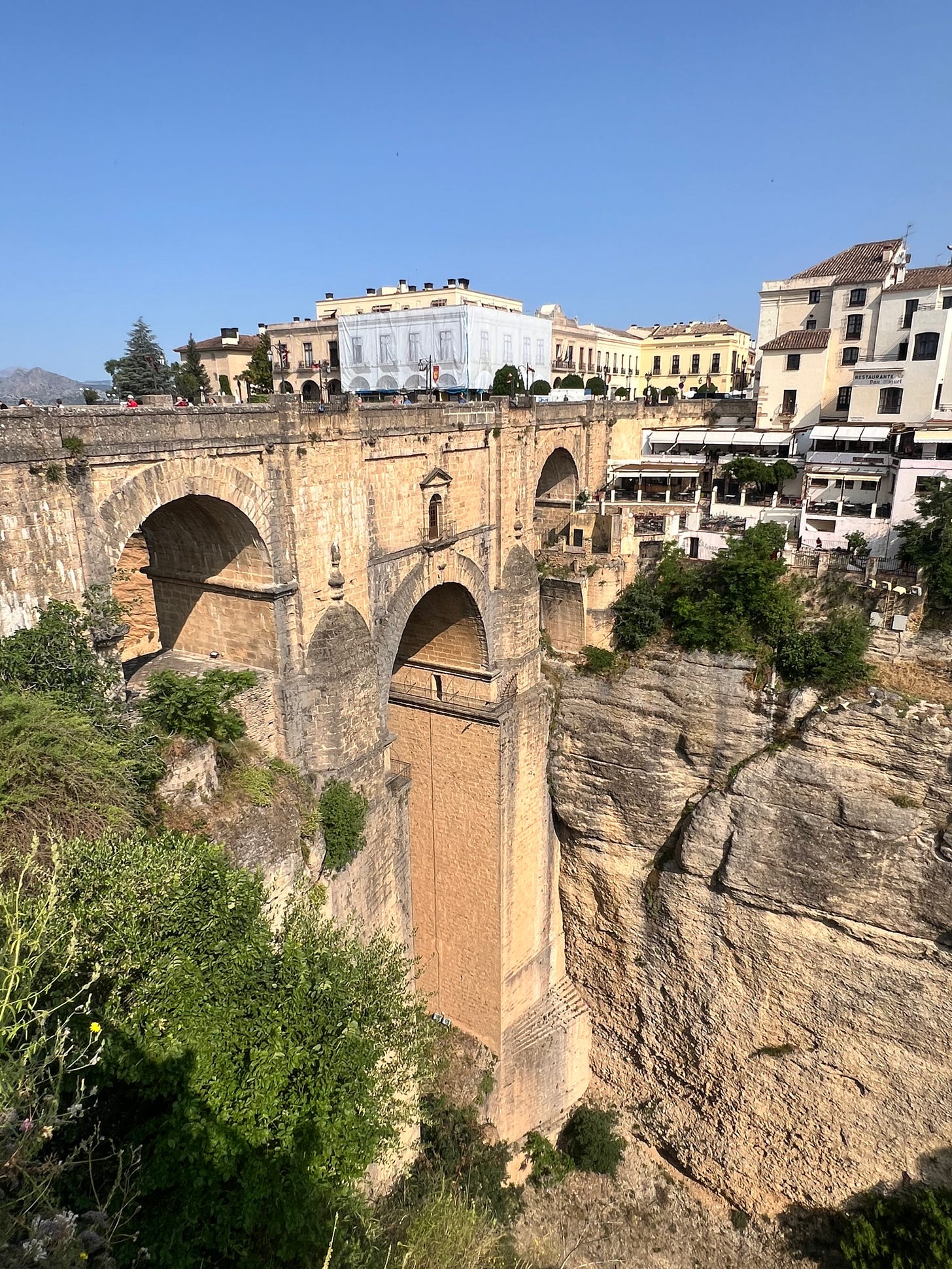Standing on the edge of the Puente Nuevo, I felt my breath catch as I gazed down into the dramatic El Tajo gorge that splits Ronda in two. The limestone cliffs plunged nearly 400 feet below me, carved by centuries of the Guadalevín River's patient work. This moment, suspended between earth and sky, perfectly captured why I had traveled to this remarkable Andalusian town perched high in the mountains of southern Spain.
Ronda's history unfolded before me like a living tapestry. Founded by the early Celts and later occupied by the Romans, who called it Arunda, the town reached its golden age under Moorish rule from 713 to 1485. Walking through the cobblestone streets of La Ciudad, the old Moorish quarter, I could almost hear the echoes of eight centuries of Islamic civilization. The Mondragón Palace, with its stunning mudéjar architecture and Renaissance patios, transported me back to an era when Christian and Islamic cultures intertwined in southern Spain.
The morning sun cast long shadows across the Plaza de España as I made my way to one of Ronda's most intriguing sites – the Convento de Santo Domingo, home to the Madres Dominicas, an order of cloistered nuns who have called Ronda home for centuries. Though visitors cannot enter the convent itself, I was fascinated to learn about these devoted women who maintain their contemplative life behind ancient walls, continuing traditions that stretch back hundreds of years. Their presence adds a spiritual dimension to Ronda's already rich cultural landscape, and I found myself wondering about their daily routines as I passed the modest entrance to their sanctuary. I cannot imagine not leaving the convent for decades, even as an introvert.
The weather during my May visit proved perfect for exploration. The spring air carried the intoxicating scent of orange blossoms and jasmine, with temperatures reaching a comfortable 75 degrees Fahrenheit during the day and cooling to pleasant evenings perfect for outdoor dining. The May light had a crystal-clear quality that made the honey-colored stone buildings glow against the deep blue sky. Occasional puffy white clouds drifted across the horizon, framing the Serranía de Ronda mountains in ever-changing patterns that made every photograph a masterpiece.
My wanderings inevitably led me to Calle Armiñán, Ronda's most romantic street, where time seems to move at a gentler pace. This charming lane has witnessed centuries of romance, particularly during the 19th century when writers, artists, and intellectuals fled the rapidly industrializing cities of Europe, seeking refuge in Ronda's timeless beauty. Many came, escaping the smoke and machinery of the Industrial Revolution, and found in this mountain retreat the perfect antidote to modern life. Lined with traditional whitewashed houses adorned with wrought-iron balconies overflowing with geraniums and jasmine, this narrow lane epitomizes the Andalusian charm that captivated those romantic souls.
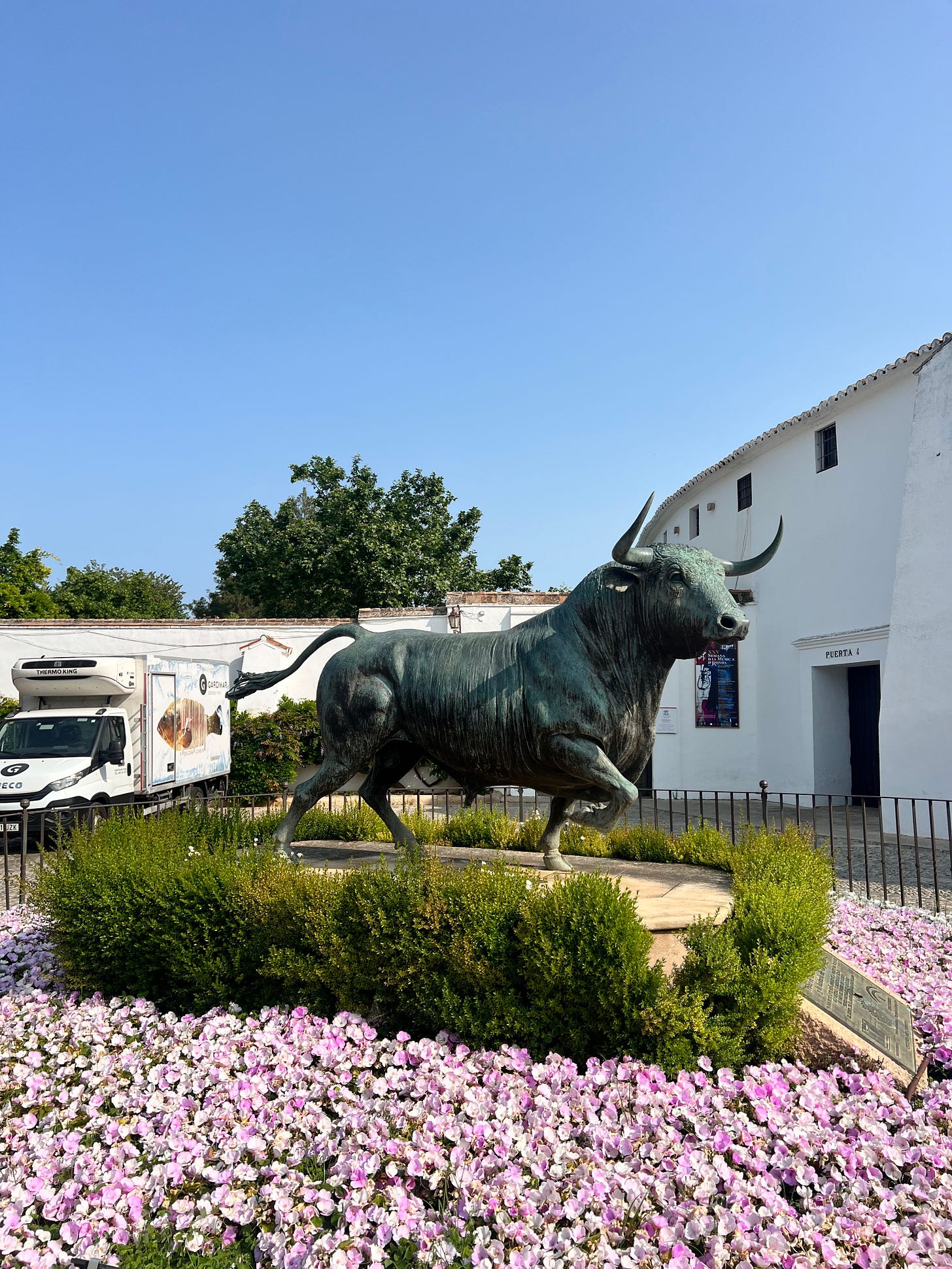
No visit to Ronda would be complete without experiencing the Plaza de Toros, Spain's oldest bullring, built in 1785. The neoclassical architecture of this historic arena is remarkable, with its perfectly circular design and distinctive yellow and white façade. The museum housed within tells the story of the Romero dynasty, a family of legendary bullfighters who helped establish Ronda as the birthplace of modern bullfighting on foot rather than horseback. The arena's intimate scale and architectural elegance make it a significant cultural landmark in the town's heritage.
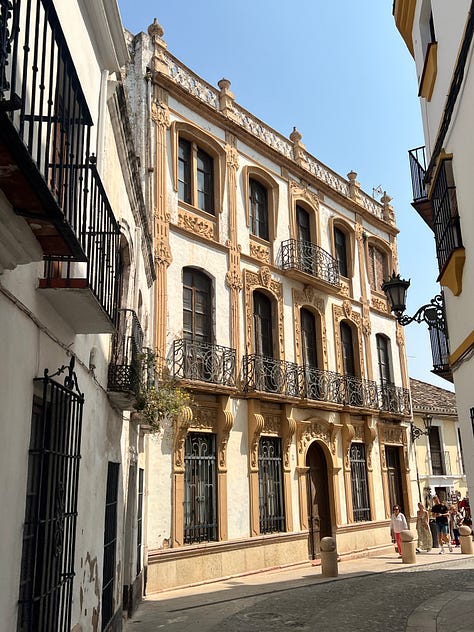
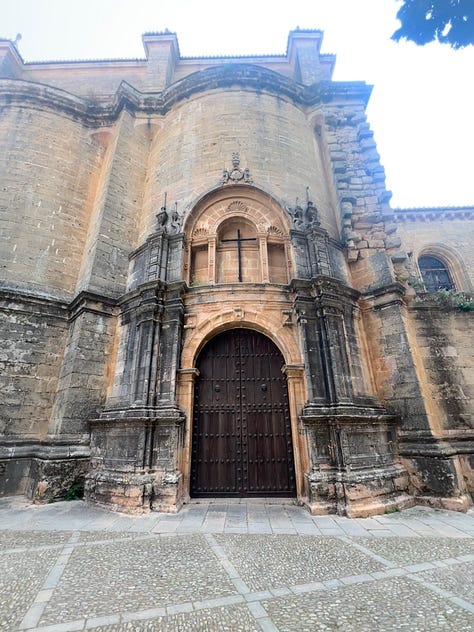

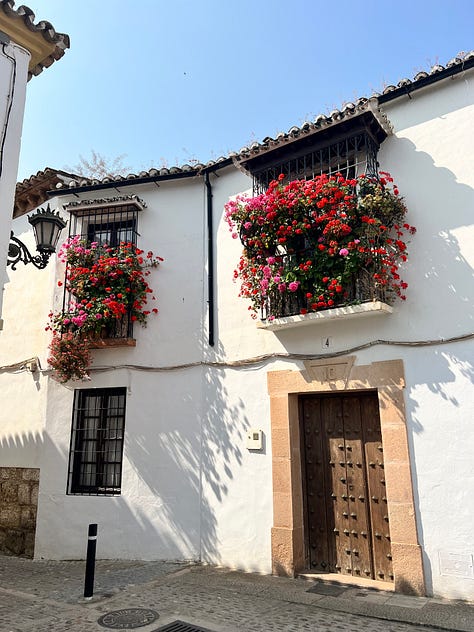


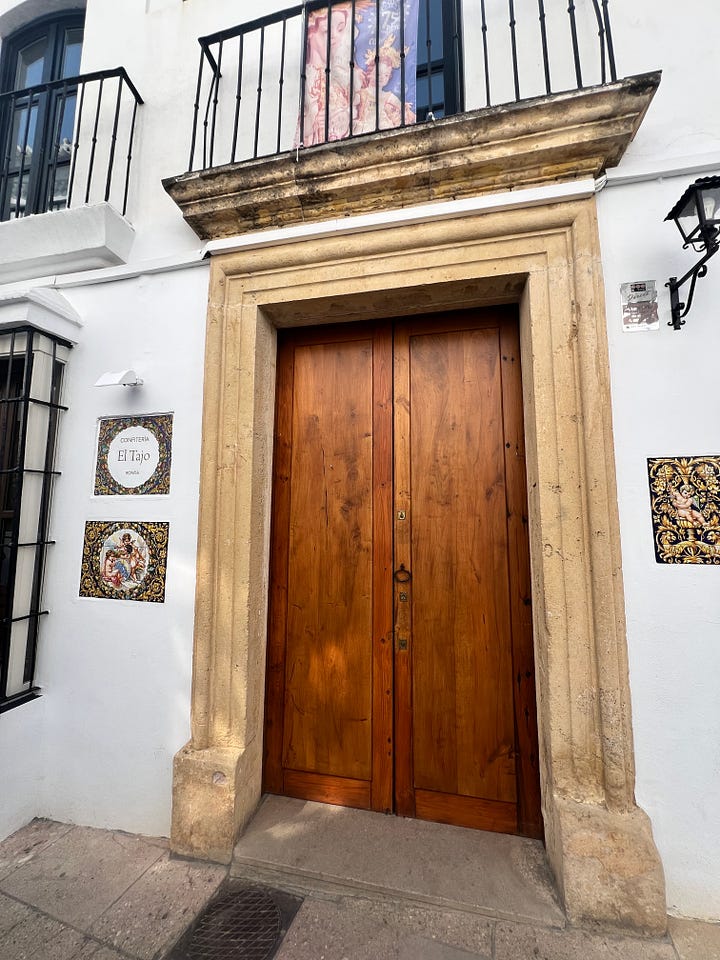
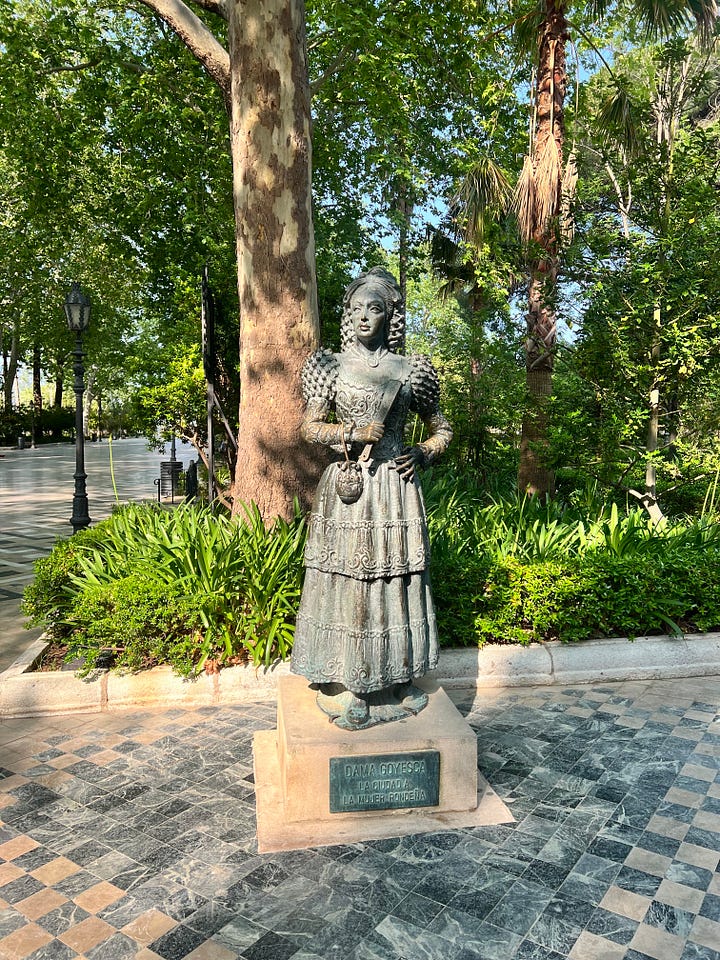
The Arab Baths, hidden beneath the San Miguel quarter, offered another glimpse into Ronda's layered past. These 13th-century hammams, among the best-preserved in Spain, reminded me of the sophisticated urban culture that flourished here during the Moorish period. Standing in the octagonal chambers with their star-shaped ceiling openings, I imagined the social rituals that once animated these now-silent stones.
As my visit drew to a close, I found myself returning repeatedly to the Puente Nuevo, drawn by its magnificent fusion of human engineering and natural beauty. Built between 1759 and 1793, this architectural marvel not only connects Ronda's old and new quarters but also symbolizes the town's ability to bridge different eras and cultures.
Ronda proved to be far more than just a picturesque mountain town. It's a place where history lives and breathes in every narrow alley, where romance lingers in flower-draped streets, and where the dramatic landscape provides a constant reminder of nature's power to inspire human creativity.




